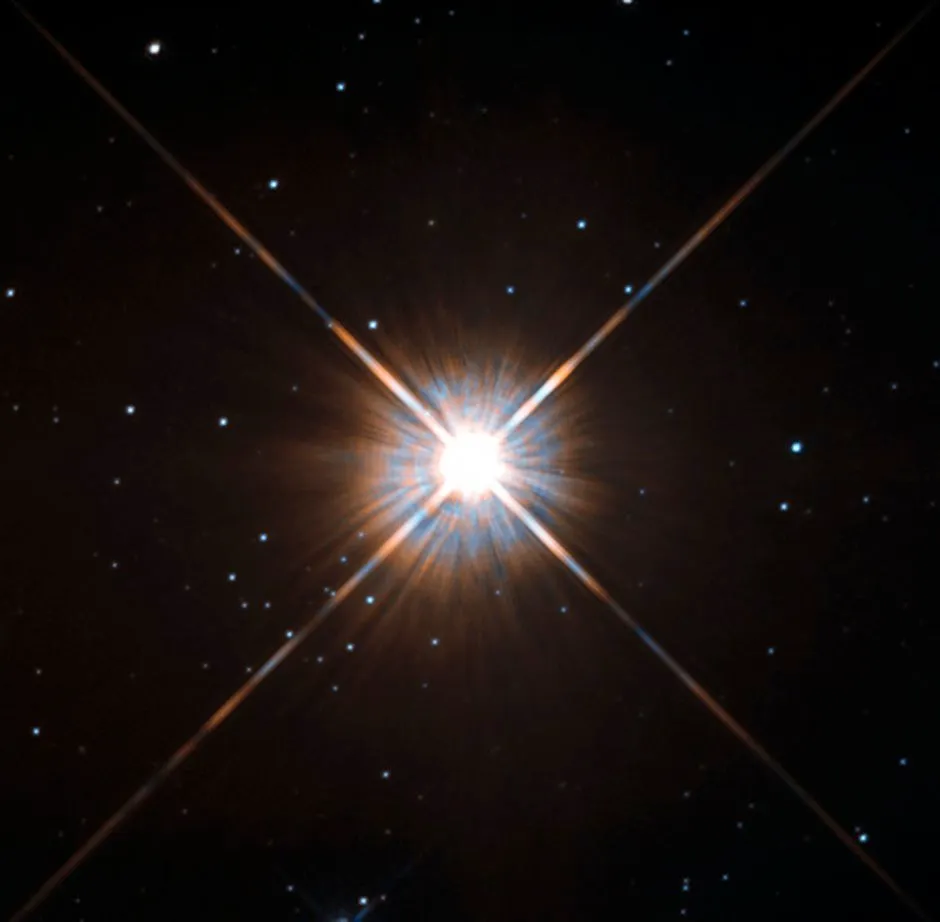Astronomers have discovered what could be a second planet orbiting Proxima Centuri, the red dwarf star just four light-years from Earth.
This neighbouring star, which is about eight times smaller than the Sun, became famous in 2016 with the discovery of an “Earth-like” planet in orbit called Proxima b. Now, an international team of researchers, including scientists from the University of Hertfordshire, have found what they believe could be yet another exoplanet, describing the object as a “low-mass planet candidate”.
Proxima c is approximately half the size of Neptune and is one of the closest exoplanets to Earth, along with Proxima b.
The team combed through 17 years’ worth of data, analysing the cyclical changes in the light spectrum emitted by Proxima Centauri.They found evidence of the star “wiggling” back and forth, indicating another planet could be in orbit. Their findings suggest that Proxima c orbits its host star every 5.2 years and may be a “super-Earth”, with “a mass higher than Earth’s but much lower than Uranus and Neptune”.
Read more about exoplanets:
- NASA exoplanet hunter TESS finds its first habitable Earth-like world
- Planet four times the size of its star discovered
Measurements indicate Proxima c is orbiting at a distance that is 1.5 times farther than Earth is from the Sun, making it much colder than Proxima b, where temperatures are mild enough to permit liquid surface water.
If its existence is confirmed, the researchers say Proxima c may provide insights into how low-mass planets form around low-mass stars.
They believe it could also challenge models of how super-Earths are born, as planets such as these are believed to form near the “snowline” – the minimum distance from a star at which water can turn to solid ice.According to the researchers, Proxima c’s orbit lies “far beyond this sweet spot”.

Hugh Jones, a professor of astrophysics at University of Hertfordshire, said: “The proximity of the planet and its orbit at a relatively great distance from its star, means it is one of the best possible chances for direct observations that will enable detailed understanding of another planet.
“Our continuing observations and improved data processing has allowed us to discern the signal of Proxima c.”
However, the authors say more evidence is needed to confirm their conclusion.
Jones added: “We look forward to confirming the signal with new facilities and finding out how similar or different from our Solar System planets Proxima c really is.”
The research is published in the journalScience Advances.
Reader Q&A: Who really discovered the first exoplanet?
During the 1960s, credit for finding the first exoplanet went to Dutch astronomer Peter van de Kamp, who claimed to have found two planets orbiting a nearby red dwarf called Barnard’s Star.
Based on analysis of tiny wobbles in the star’s location over 30 years, the claim stood until the mid-1970s, when it emerged the cause was a wobbly telescope lens, not the effect of invisible planets on the star.
In 1991, two British astronomers claimed to have found a planet orbiting a pulsar, a remnant of a dead star. Within months, this too had been shown to be an illusion. By then, the Polish astronomer Aleksander Wolszczan and colleague Dale Frail had announced the discovery of at least two planets around another pulsar by detecting subtle shifts in its emission of radiation.
While subsequently confirmed, these planets and their parent ‘star’ have little in common with our Solar System. Credit for the discovery of the first planet orbiting a normal star thus goes to Swiss astronomers Michel Mayor and Didier Queloz, who found a Jupiter-sized object orbiting the star 51 Pegasi in 1995.
Read more: